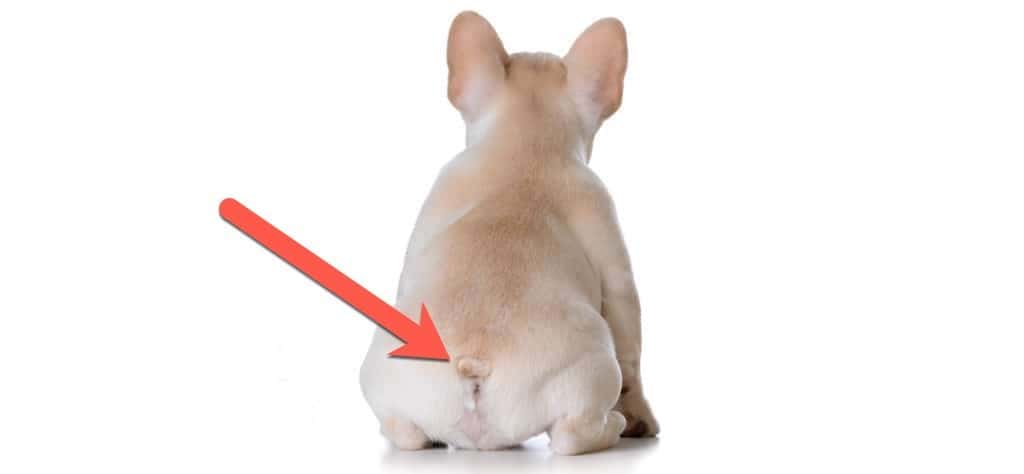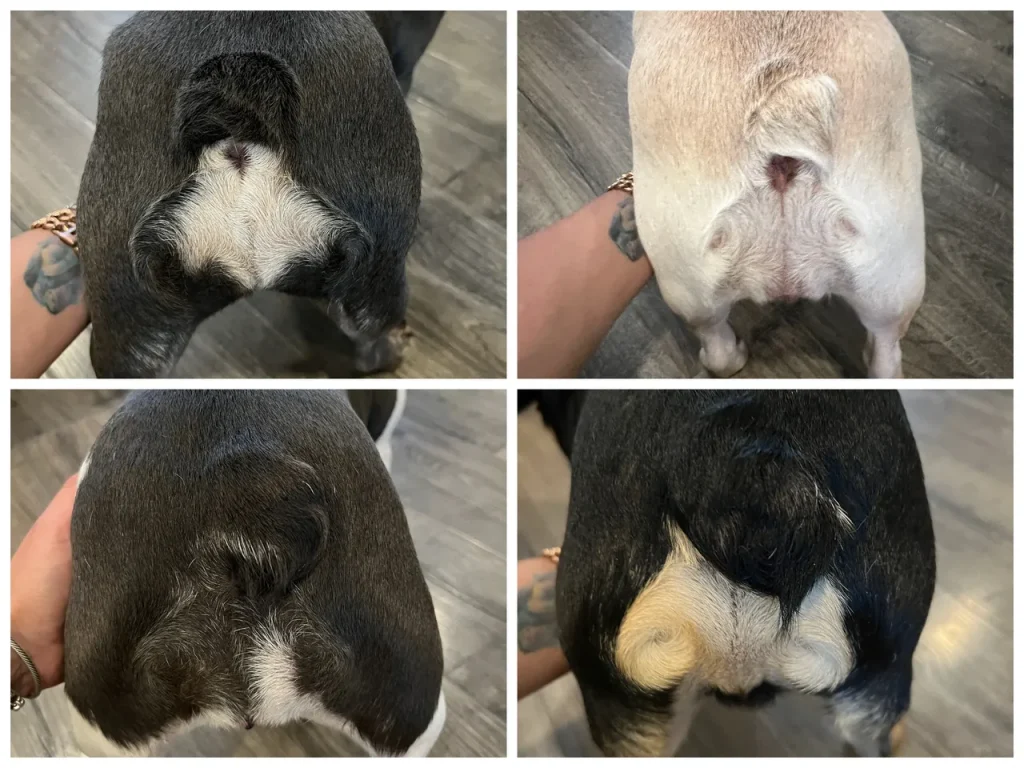Do French Bulldogs have a tail? French Bulldogs, also known as “Frenchies,” are a popular breed of small companion dogs that have captured the hearts of many pet owners around the world. With their adorable bat-like ears, expressive eyes, and compact size, it’s no wonder why they have become such beloved pets. As an author and dog enthusiast myself, I have had the pleasure of owning and interacting with French Bulldogs over the years.
In this article, I will delve into various aspects of French Bulldogs – from their history and physical characteristics to their temperament and health concerns. Additionally, I will explore a controversial topic surrounding this breed: tail docking.
The History of French Bulldogs
To truly understand the nature of French Bulldogs, it is essential to explore their origins and how they have evolved over time. The breed traces its roots back to England in the 1800s when lace workers from Nottingham migrated to France during the Industrial Revolution. These workers brought along their small bulldogs known as “Toy Bulldogs,” which were crossed with local terriers in France.
Over time, these Toy Bulldogs underwent further breeding modifications in France to create what we now know as French Bulldogs. The breed gained popularity among Parisian society due to its charming appearance and friendly demeanor. They became fashionable companions for artists, writers, and even royalty.
Physical Characteristics of French Bulldogs
French Bulldogs are characterized by their unique physical features that set them apart from other breeds. They are small-sized dogs weighing between 16-28 pounds (7-13 kg) on average with a height ranging from 11-12 inches (28-30 cm). Despite their compact size, they possess a sturdy build with well-developed muscles.
One notable feature is their coat which comes in various colors including brindle (a mix of black or dark brown with lighter shades), fawn (a light tan color), pied (white patches on a base color), or solid black or white. Their short, smooth coat requires minimal grooming, making them a low-maintenance breed in terms of coat care.
Temperament and Personality of French Bulldogs
French Bulldogs are known for their affectionate and sociable nature. They thrive on human companionship and make excellent family pets. I remember when I first brought home my French Bulldog puppy, he immediately bonded with everyone in the household. He would eagerly greet us at the door with his tail wagging furiously, ready to shower us with love and attention.
These dogs have a playful side but are generally not overly energetic or hyperactive. They enjoy leisurely walks and interactive play sessions but are equally content snuggling up on the couch with their owners. Due to their friendly disposition, they usually get along well with children and other pets if properly socialized from an early age.
Health Concerns for French Bulldogs

While French Bulldogs bring joy to many households, it is important to be aware of the potential health issues that can affect this breed. One common health concern is brachycephalic syndrome due to their flat faces which can lead to breathing difficulties. This makes it crucial for owners to monitor their dog’s activity levels during hot weather or strenuous exercise.
Additionally, French Bulldogs may be prone to allergies, skin problems, eye conditions such as cherry eye or cataracts, as well as joint issues like hip dysplasia or patellar luxation. Regular visits to the veterinarian are essential for early detection and management of these health concerns.
To maintain a healthy French Bulldog, proper nutrition is vital. Feeding them a balanced diet that meets their specific nutritional needs will help support overall well-being and prevent obesity-related issues commonly seen in this breed.
The Debate over Tail Docking in French Bulldogs
One controversial topic surrounding French Bulldogs is tail docking – a practice where part of the tail is surgically removed shortly after birth for various reasons including cosmetic purposes, historical traditions, or to prevent future injuries. The debate surrounding tail docking has sparked passionate discussions among dog owners, breeders, veterinarians, and animal welfare organizations.
Proponents of tail docking argue that it prevents tail injuries in certain working breeds and can reduce the risk of infection or other health issues. On the other hand, opponents believe that it is an unnecessary procedure that causes pain and distress to the dog without providing any significant benefits.
The Ethics of Tail Docking in French Bulldogs
When considering the ethics of tail docking in French Bulldogs or any other breed for that matter, it is essential to take into account both sides of the argument. Animal welfare organizations such as the American Veterinary Medical Association (AVMA) and Royal Society for the Prevention of Cruelty to Animals (RSPCA) oppose routine tail docking as they consider it a form of unnecessary cosmetic surgery with potential negative consequences for dogs’ physical and psychological well-being.
As a responsible pet owner myself, I believe in prioritizing my dog’s overall health and well-being above aesthetic preferences. While I understand historical justifications for tail docking in certain working breeds where there may be a higher risk of injury during their duties, I find it difficult to justify this practice solely for cosmetic reasons.
The Legal Status of Tail Docking in French Bulldogs
The legal status regarding tail docking varies from country to country. In some places like England and Scotland, routine tail docking is prohibited except under specific circumstances where there is evidence that future injury may occur due to work-related activities. Other countries such as Australia have completely banned non-therapeutic tail docking across all breeds.
In contrast, some countries still allow routine tail docking without restrictions or regulations. It is important for prospective French Bulldog owners to familiarize themselves with local laws regarding this practice before making any decisions.
Alternatives to Tail Docking in French Bulldogs
For those who are against traditional surgical methods like myself but still wish to manage the length of their French Bulldog’s tail, there are non-surgical alternatives available. These alternatives include using a technique called “banding” where a small rubber band is placed around the tail base during early puppyhood. This restricts blood flow to the tail, causing it to naturally fall off after a few days.
While this method may seem less invasive than surgical docking, it is crucial to consult with a veterinarian before considering any alternative methods. They can provide guidance on the safest and most appropriate options for your specific dog.
Pros and Cons of Tail Docking in French Bulldogs
To weigh the pros and cons of tail docking in French Bulldogs, it is important to consider both sides of the argument. Proponents argue that docking can prevent future injuries or infections in certain working breeds or reduce potential risks associated with long tails in crowded environments. However, opponents believe that these justifications do not outweigh the potential pain and distress caused by an unnecessary surgical procedure.
Ultimately, each individual must make an informed decision based on their own beliefs and values regarding this practice. It is essential to thoroughly research all aspects surrounding tail docking before making any decisions that may impact your beloved pet’s well-being.
Conclusion: Making an Informed Decision about Tail Docking in French Bulldogs
In conclusion, French Bulldogs are delightful companions known for their affectionate nature and unique physical features. However, when it comes to controversial practices like tail docking, it is crucial for owners to make informed decisions based on thorough research and consideration of all factors involved.
Consulting with a veterinarian who has experience with French Bulldogs can provide valuable insights into health concerns specific to this breed as well as alternative methods available for managing tail length if desired. Additionally, engaging in open discussions with reputable breeders who prioritize ethical breeding practices can help prospective owners gain further understanding about responsible dog ownership.
As someone who cherishes my furry friends’ happiness above all else, I believe that prioritizing their overall well-being and respecting their natural physical attributes is of utmost importance. By making informed decisions, we can ensure that our French Bulldogs live happy, healthy lives while embracing their unique characteristics that make them so beloved.
FAQs
What is a French Bulldog?
A French Bulldog is a small domestic breed of dog that originated in France. They are known for their distinctive “bat ears” and affectionate personalities.
Do French Bulldogs shed?
Yes, French Bulldogs do shed. However, their short, fine coat requires minimal grooming and shedding is not usually a major issue.
Are French Bulldogs good with children?
French Bulldogs are generally good with children and make great family pets. However, as with any breed, it is important to supervise interactions between children and dogs to ensure safety.
Do French Bulldogs have health issues?
French Bulldogs are prone to certain health issues, such as breathing problems, hip dysplasia, and skin allergies. It is important to choose a reputable breeder and provide proper care to minimize the risk of these issues.
Do French Bulldogs need a lot of exercise?
French Bulldogs do not require a lot of exercise and are generally content with short walks and indoor playtime. However, it is important to provide regular exercise to maintain their health and prevent obesity.
Should French Bulldogs have their tails docked?
Tail docking is a controversial practice and is illegal in some countries. French Bulldogs are traditionally docked, but it is not necessary for their health or well-being. It is a personal choice for owners and should be discussed with a veterinarian.
Originally posted 2024-01-26 02:43:48.
Johny is a dedicated pet enthusiast, author, and the driving force behind the insightful content at PetSWAT. With a deep passion for animals and a wealth of knowledge acquired through years of experience, Johny brings a unique perspective to the world of pet care and companionship.




